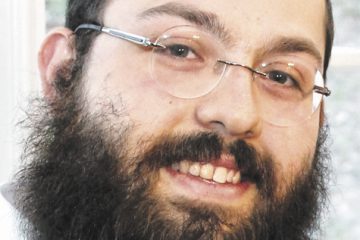Purim’s not just for kids
 By Rabbi Haviva Horvitz, Temple Beth Sholom, Middletown, Ohio
By Rabbi Haviva Horvitz, Temple Beth Sholom, Middletown, Ohio
It is safe to say that there are many Jewish holidays which could be described as: “they tried to kill us, they failed, let’s eat.”
But none more so than Purim. If you do not know the story, the Book of Esther, you are in luck because one of the four obligations of this holiday is to listen to the Megillah (the scroll that refers specifically to the Book of Esther.) Note that it is not reading the story, but listening to the story, which is the mitzvah.
The other three requirements are giving to the needy (matanot la’evyonim), sending food portions to friends (mishloach manot), and a festive meal, including wine or other inebriating drink.
But what is the real meaning of Purim? When you listen to the story, pay close attention and you will notice that something very important is missing. As a matter of fact, you can Google it, do a Yahoo search, or ask anyone who has read the entire Megillah: the name of God does not seem to appear anywhere in the entire Book of Esther.
So, where is God? When Mordechai is introduced (Chapter 2, Verse 5), he is described as a “certain Jew in Shushan the castle, whose name was Mordechai the son of Jair the son of Shimei the son of Kish, a Benjamite.”
Everyone knew him to be a Jew. So, God’s influence is recognized, but that is not the same as God’s presence. The female lead of our story is known by her Persian name, Esther. However, she also had a Hebrew name, Hadassah. Many people today have an English name and a Hebrew name. It is very common.
There are times when one is comfortable being Jewish and other times when one may wish to fit into his or her surroundings. Therefore, it is easy for us to understand this duality. But, again, the name of God is not obviously mentioned.
On the other hand, look closely at Chapter 5, Verse 4, the section of the story during which Esther invites King Ahashverus and Haman to the first banquet, a time when Esther needs to have God with her.
Look at the Hebrew. The sentence is: Yavo hamelech v’Haman hayom and roughly translates to, The king and Haman will come today.
The wording is a bit awkward. However, when the first letters from each of these four words is put together, one of the names of God becomes obvious. What does this mean? It teaches us that God is everywhere, always available and especially when needed, God can be found.
So, is that it? Does this holiday teach us anything else?
The name of the holiday, Purim, comes from the word pur which translates to lot, as in lottery. It is named after a minor detail in the story. Haman chose the date to destroy all the Jews based on picking lots. However, it sounds a great deal like another Jewish holiday, Yom Kippur.
If you translate the Hebrew, yom means day and the prefix ki means like. Therefore, Yom Kippur(im) is a day like Purim.
One might think that this is impossible. Yom Kippur is the Day of Atonement, one of the most solemn days of the Jewish year. Purim is a festive excuse to dress in a costume and get drunk.
The two seem to be opposite. It was a chasidic rabbi, Menachem Mendel Morgensztern of Kotzk, better known as the Kotzker Rebbe, who explained, “Why is the Day of Atonement called A Day Like Unto Purim? On Purim we dress up in costumes and pretend to be what we aren’t; on Yom Ki-Purim we pretend to be tzaddikim (righteous).”
Or maybe we learn through this comparison that God is available to each of us on a solemn day like Yom Kippur just as much as on a fun day, like Purim.
So, what is Purim? Purim is a festive holiday, found at the very beginning of spring, when we need a fun release. It is an occasion that encourages each of us to find our inner child, to listen to stories, to eat and drink, and to connect with God.
On the other hand, it is only a month until the next holiday. Thus, Purim is a fun method to prepare and give away all the hametz (leavened food), which has to be finished before Passover. So we eat, we drink and we enjoy!
May you and your family have a happy and healthy Purim.
To read the complete March 2014 Dayton Jewish Observer, click here.





